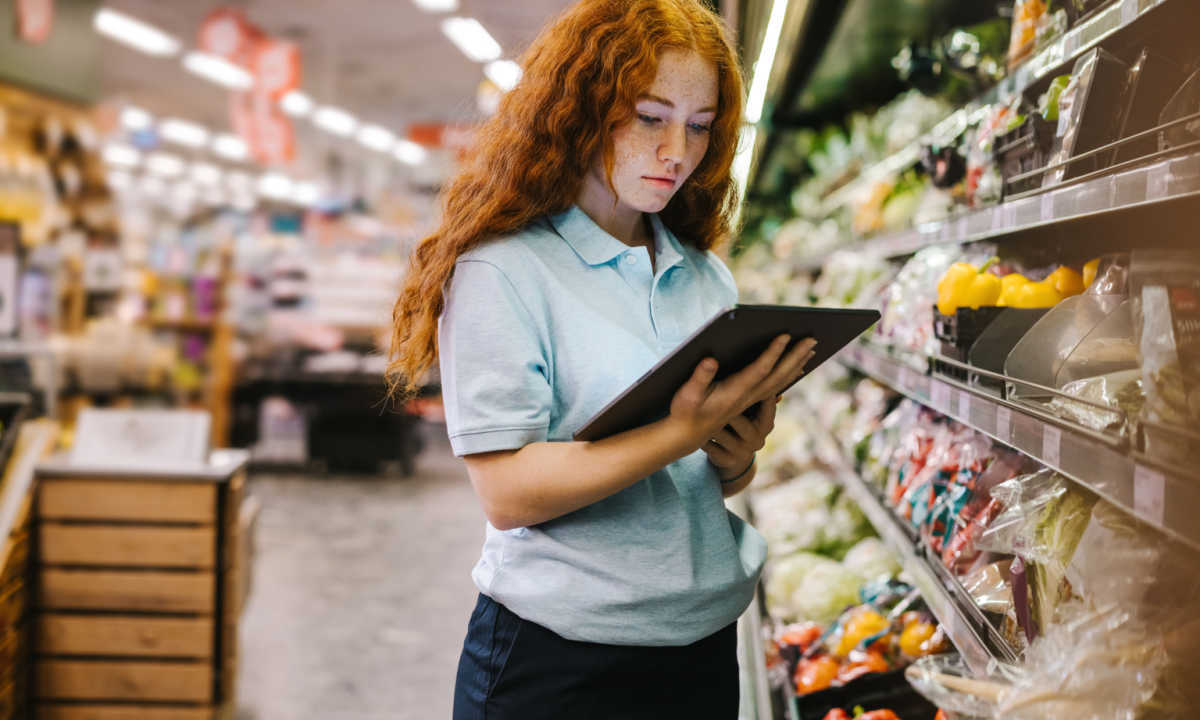Google AI Fixes Grocery Store Inventory With Kroger Partnership

As grocers look to secure consumers’ loyalty with the best-stocked shelves, Google is getting involved.
On Friday (Jan. 20), Google Cloud and Deloitte announced they are working with leading U.S. pure-play grocery retailer Kroger to improve the in-store experience for shoppers. The three companies have collaborated on a task management application, which provides information on shelf-stocking and inventory among other matters, and a store management app.
“Technology and digital tools are fundamental elements of how Kroger continues to improve the associate experience, which in turn, enhances the in-store experience for our customers,” Kroger Vice President of Enterprise Retail Systems Jim Clendenen said in a statement. “Google Cloud and Deloitte brought us a technology architecture and application framework that we could implement in record time. We’re already seeing results.”
The technology uses Google’s artificial intelligence (AI) and machine learning capabilities as well as its data-processing features, among others, for real-time information and communication.
Inventory and shelf-stocking can be key differentiators for grocers. According to research from PYMNTS’ study “Decoding Customer Affinity: The Customer Loyalty to Merchants Survey 2022,” created in collaboration with Toshiba Global Commerce Solutions, which drew from a survey of more than 2,000 United States consumers, 51% of shoppers said ensuring that the grocery products they want are in stock and available for purchase is key to ensuring their continued patronage of a given merchant.
Plus, PYMNTS’ 2021 study, Removing Friction at the Checkout: How Payment Experiences Influence Consumer Choice, created in collaboration with Checkout.com, found that 56% of consumers cite lack of inventory status/product availability as a point of friction.
In an interview with PYMNTS, Larissa Russell, co-founder and CEO of Pod Foods, a company that offers a wholesale marketplace to connect grocers and emerging consumer-packaged goods (CPG) brands, said shelf-stocking will increasingly be a priority for grocery shoppers.
“It all becomes who has the most relevant assortment in their store,” she said, “because if the consumer can’t get a product in grocery store, they’re going to look for it somewhere else.”
Improving the store experience is especially essential now, with inflation providing an opportunity for grocers to gain share from restaurants, one that the industry is apparently failing to take full advantage of.
The U.S. Census Bureau’s advanced monthly sales report, released Wednesday (Jan. 18), showed that grocery store sales rose only 0.1% between November and December. Given that U.S. Bureau of Labor Statistics (BLS) data reveals that grocery prices increased 0.3% in that time, it seems that, if anything, consumers actually bought fewer groceries than last year.
Yet, based on shoppers’ self-reports, they should be buying more. Research from PYMNTS’ study “Consumer Inflation Sentiment: Inflation Slowly Ebbs, but Consumer Outlook Remains Gloomy” found that 78% of consumers have been eating at home more often to save money amid inflation.
By improving the in-store experience for consumers, Kroger may have the opportunity to seize on the increased demand for food-at-home options, ensuring that consumers open to new grocery options have a positive shopping experience.
